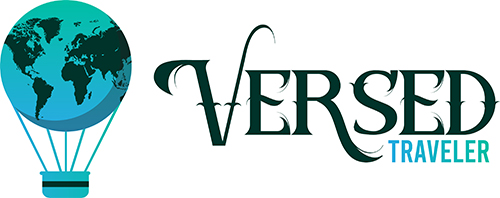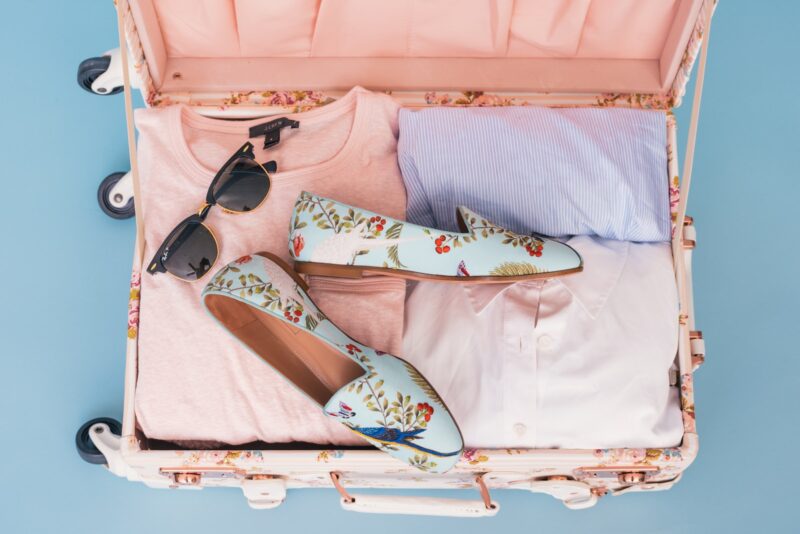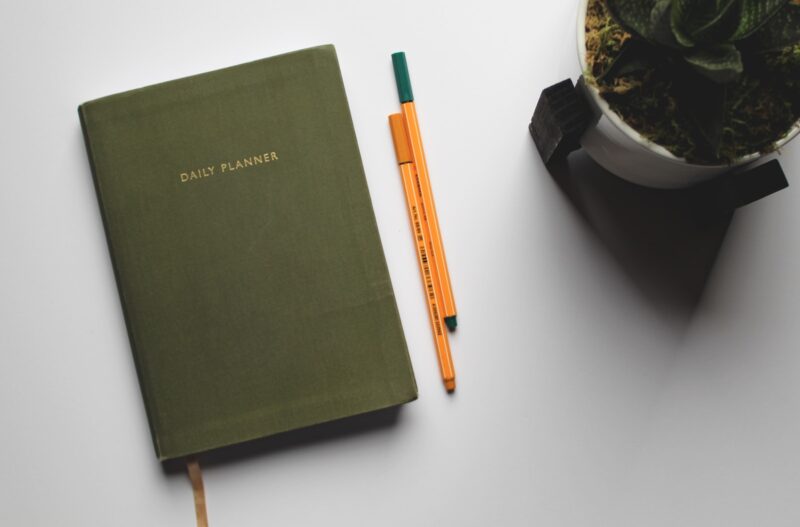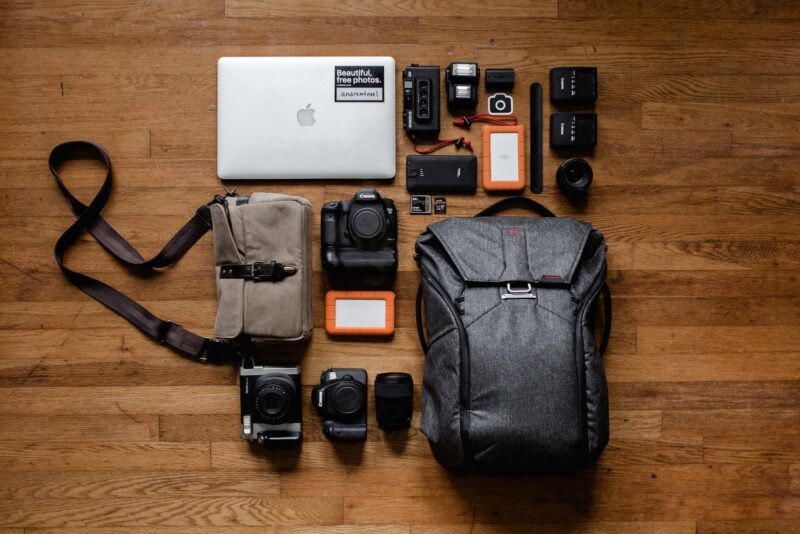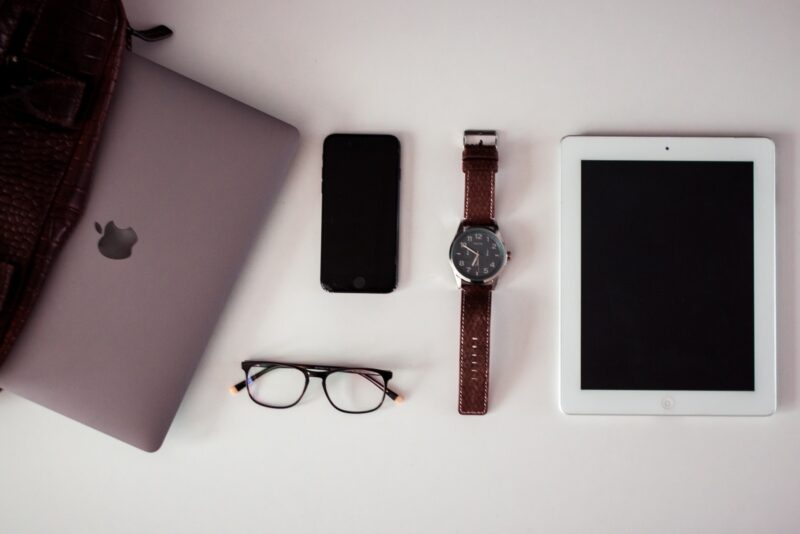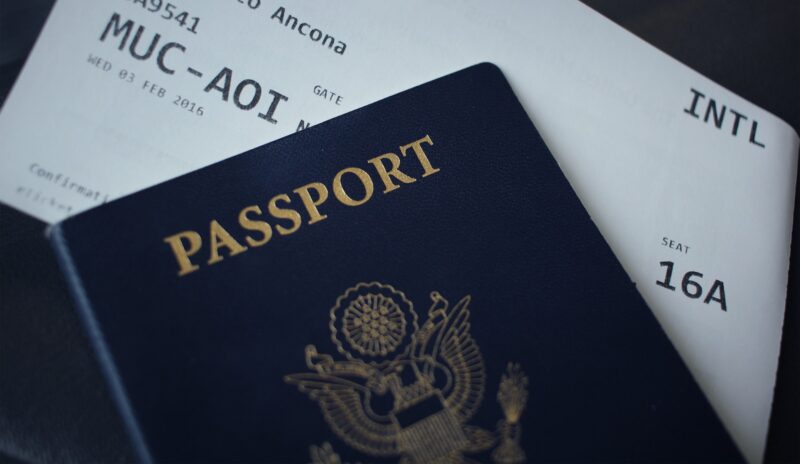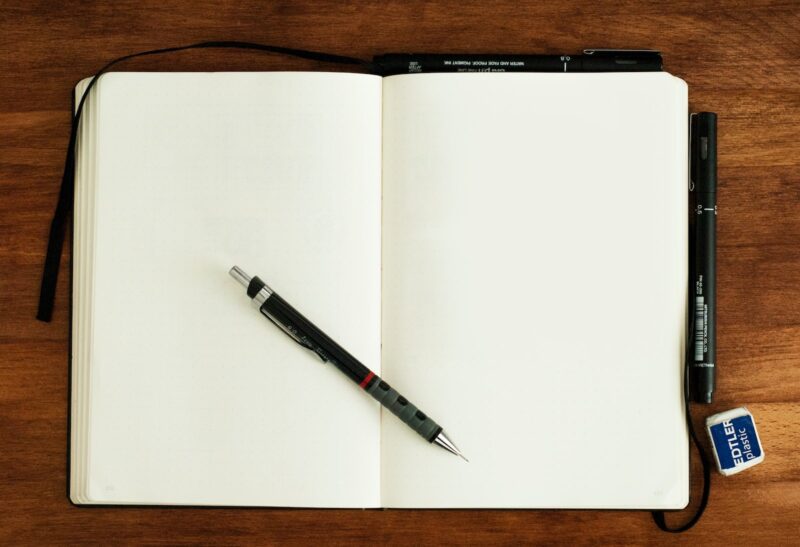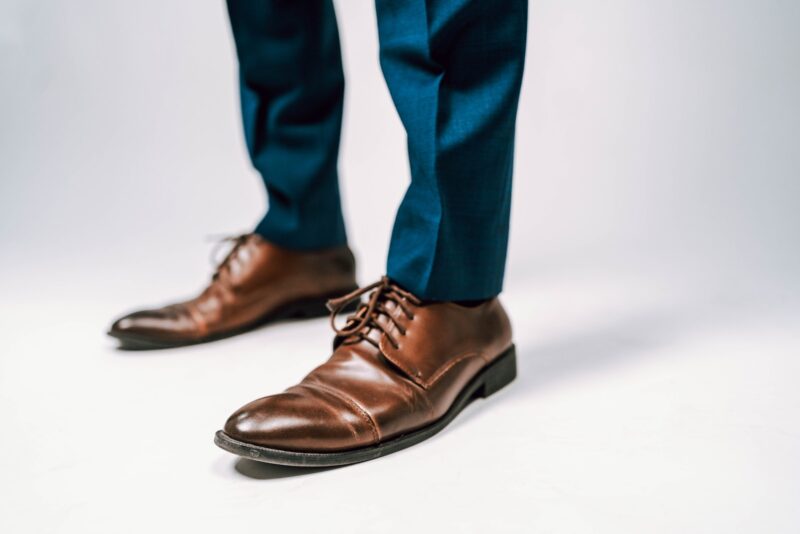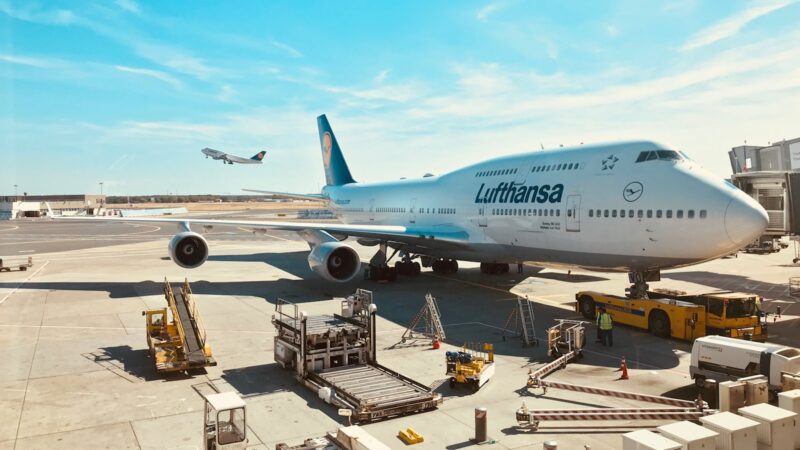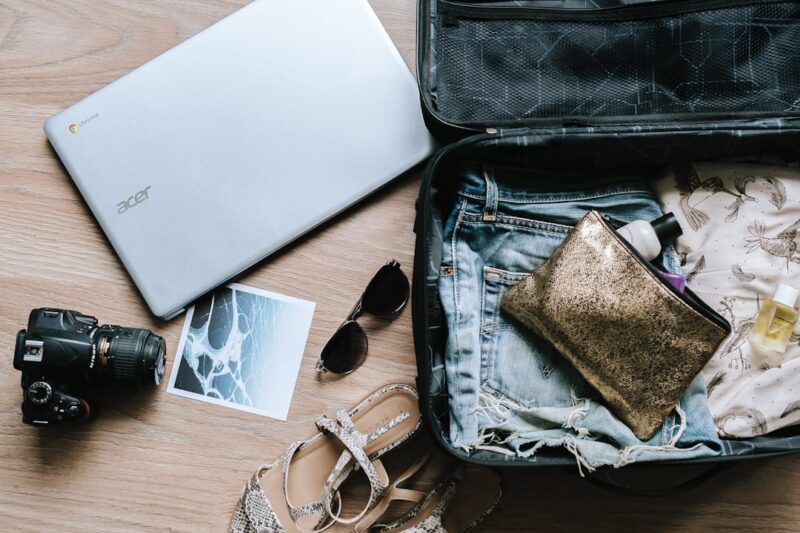Learning how to pack for a business trip can be a daunting task, especially for those who are new to traveling for work or are simply unsure of what to bring. When preparing to pack for a business trip, it’s crucial to consider the needs of your job, the length of your stay, and the destination’s climate. By carefully planning and organizing your luggage, you can ensure a successful and efficient trip, allowing you to focus on your work rather than stressing over missed essentials.
One key aspect of starting to pack for a business trip is selecting the right luggage and organizational tools. Investing in high-quality luggage and packing cubes can make a significant difference in staying organized and keeping your belongings easily accessible. Additionally, choosing a business-friendly travel bag that can accommodate your laptop and other essentials is paramount to a stress-free journey. Another important consideration when you pack for a business trip is the selection of clothing and accessories. But before we get too far ahead of ourselves, let’s cover the basics. Read on to learn how to pack for a business trip.
Table of Contents
ToggleUnderstanding the Purpose of a Business Trip
A business trip is a journey undertaken for work purposes, often involving traveling to a different city or country to attend meetings, conferences or to finalize deals. The primary goal of these trips is to represent one’s organization and accomplish specified objectives, thus enhancing the company’s growth and development.
When embarking on a business trip, it is essential to prioritize efficiency and professionalism. This helps in making a positive impression on colleagues, clients, or investors. Being prepared and organized is the key to achieving success in such trips. To ensure that your work trip goes smoothly, packing relevant business essentials becomes crucial.
Business essentials include necessary documents, a laptop or tablet, formal attire, and essentials like chargers, adapters, and travel-sized toiletries. Proper planning and preparation can make traveling for work stress-free, enabling you to focus on accomplishing your goals during the trip.
It is important to note that business trips differ from leisure vacations, as they are centered on professional commitments and usually have tighter schedules. Unlike vacation travels, business trips require you to be well-equipped with work-related resources, practice punctuality, and maintain a formal demeanor. Therefore, it is crucial to keep the purpose of the trip in mind while packing and making travel arrangements.
In conclusion, understanding the purpose of a business trip helps you to prepare and pack accordingly. By carrying optimal business essentials and prioritizing professionalism, you can efficiently achieve your objectives and ensure a successful work trip.
How to Pack for a Business Trip
Drafting an Itinerary
When preparing to pack for a business trip, one of the crucial steps is to draft a comprehensive itinerary. This helps to ensure that all the necessary information is organized, making the trip more efficient and enjoyable. To begin with, it’s essential to gather the details regarding the primary activities, meetings or events that will be the focus of the trip.
Next, include important details like flight schedules, accommodation reservations, and transport arrangements for each leg of the journey. This not only helps in ensuring a seamless experience but also assists in planning any additional activities or networking events that may be of interest. To do this, researching local events, conferences, and opportunities beforehand can make the business trip more productive and worthwhile.
In addition, consider building some flexibility into the itinerary. This will allow for any unexpected changes, such as last-minute meetings or alterations in your schedule. Be sure to also include some downtime in the itinerary, as maintaining a healthy work-life balance during a business trip can contribute to overall success and enjoyment.
In drafting the itinerary, present the information in a clear and organized manner. Utilizing tables or bullet points can effectively convey the chronological order of events and activities. Bold text can be used for emphasis on crucial information, such as departure or arrival times, key meetings, and networking opportunities.
Choosing Appropriate Business Attire
When preparing to pack for a business trip, selecting the right attire is crucial for making a positive impression. Business attire usually includes a combination of suits, shirts, dresses, jackets, shoes, ties, pants, skirts, underwear, socks, blazers, heels, flats, dress shoes, coats, business casual clothing, blouses, and dress shirts.
For men, a classic suit is always a safe option. Choose a dark-colored suit, such as navy or charcoal, paired with a crisp, well-fitting dress shirt. If the occasion calls for a more formal setting, add a tie. Dress shoes should be polished and match the color of your suit; black or dark brown are the most versatile choices. Don’t forget to pack a few pairs of dress socks and comfortable, supportive underwear.
For women, there are numerous options for business attire. A well-fitting pantsuit or skirt suit paired with a blouse is a professional choice. If a suit is not required, a dress or a skirt and blazer combination can be an appropriate alternative. Opt for neutral or dark colors, and make sure the hemlines and necklines are modest. Heels or flats should be worn depending on personal preference, as long as they are comfortable and professional-looking. Undergarments should be supportive and not visible through clothing.
In some cases, business casual attire may be appropriate for a trip. This typically includes dress pants or khakis paired with a dress shirt or blouse. Men could wear a blazer or sports coat, while women might choose a casual dress, skirt, or tailored pants. Keep in mind that jeans and sneakers are usually too casual for business settings.
When selecting the clothing items to pack, consider the duration of your trip, the itinerary, and any events or meetings requiring specific attire, such as formal dinners. Additionally, it’s wise to pack extra dress shirts or blouses and an additional pair of pants or a skirt, in case of unforeseen spills or wrinkles.
Remember that dressing appropriately for a business trip can make a strong impact on your professional presence. By packing versatile, high-quality, and professional-looking attire, you’ll convey confidence and competence throughout your trip.
Packing Personal Items
When preparing for a business trip, packing the right personal items in your luggage is important. Start by choosing the appropriate suitcase or carry-on that meets airline size regulations and suits your needs. Carry-on-sized luggage with a separate personal item, like a briefcase or backpack, is often ideal for shorter trips. A quality, business-friendly travel bag can make all the difference.
Ensure you pack a sufficient number of underwear, socks, and shirts for the trip’s duration. For clothing, it’s best to opt for wrinkle-free and versatile options. Include a combination of pants, such as dress pants and jeans, that can be worn in various settings.
Business attire is essential for meetings and conferences. Pack at least one suit or dress, with a blazer to pair with different outfits. Women may consider packing additional dresses suited for work events, while men should not forget to pack ties. Bring a multipurpose jacket that can be worn with your business outfits and casual attire.
Select comfortable and supportive shoes that can be worn for extended periods. Pack one pair of dress shoes for formal occasions and a second pair for casual outings. Additionally, include pajamas for a restful night’s sleep.
Don’t forget your essentials such as a laptop, books, pencils, and other work-related items. Keep them secure in your briefcase or backpack. Add smaller personal items like an umbrella, especially if you’re traveling to a location with unpredictable weather.
In summary, effectively packing for a business trip involves choosing the right luggage, organizing your clothing items, prioritizing business attire, and including essential work and personal items. With these tips, you can ensure a successful and productive trip.
Organizing Electronics
When packing for a business trip, it’s essential to organize your electronics efficiently and safely. Start by creating a list of necessary devices like a laptop, phone, tablet, Kindle, and chargers for each device. Don’t forget accessories such as headphones, earbuds, adapters, and any additional cables you may need.
Begin by selecting a dedicated electronics organizer bag or compartment within your luggage for proper storage. Ensure you have a designated place for every device to prevent damage and tangling of cables.
Chargers are essential for keeping your devices powered during your trip. Bring along separate chargers for your phone, laptop, tablet, and other gadgets to ensure they’re always ready for use. Packing a multi-port USB wall charger can be helpful, as it allows you to charge multiple devices simultaneously using a single power outlet. Additionally, consider carrying a portable charger or power bank for on-the-go charging.
Since business trips often involve constant connectivity, it’s crucial to be prepared for varying internet access situations. Carrying a Wi-Fi hotspot enables you to stay connected when free Wi-Fi sources are unavailable or unreliable. Also, remember to pack additional connection cables, such as ethernet cords or adapters, to ensure compatibility with any available internet source.
A well-organized and functional travel tech organizer kit will help you avoid the frustration of untangling cables and keep your essential devices protected during your trip. By following these suggestions, you can ensure that your business trip runs smoothly, and your electronic devices stay safe and ready for use.
Preparing Necessary Documents
When preparing to pack for a business trip, it’s crucial to gather and organize all essential documents. Proper documentation helps ensure a smooth journey, from airport check-in to hotel accommodations and business meetings.
Firstly, ensure your passport is up-to-date and not close to expiration. It’s the most vital item for international travel, and without it, you won’t be allowed on the airplane. Keep a photocopy or a digital copy of your passport and other identification documents, just in case they get lost during the trip.
Next, compile all your travel documents, including boarding passes, hotel confirmations, and rental car details. Stay organized by keeping physical copies in a designated folder or using a travel organizing app like TripIt to store all necessary information in one place.
Business cards are an indispensable networking tool, especially when meeting new clients and business partners during your trip. Bring an ample supply of cards, and store them in a wallet or cardholder for easy access and presentation.
In the era of digital communication, it’s still essential to have physical copies of vital paperwork for meetings and presentations. Carry copies of contracts, reports, and other documents that might be needed during business discussions. Alternatively, store them in the cloud or on a USB drive for easy access.
Lastly, make sure your wallet is well-organized, containing any necessary payment methods, such as cash, credit cards, and a corporate charge card. Foreign currency may be needed for international trips, so plan ahead and exchange money before departure if possible.
By diligently preparing all necessary documents, you’re setting yourself up for a successful and stress-free business trip.
Considering Weather and Climate
When preparing to pack for a business trip, it is essential to consider the destination’s weather and climate to pack appropriately. Being prepared for various weather conditions can make your trip more comfortable and reduce the risk of unexpected inconveniences.
Begin by checking the local weather forecast for the duration of your trip. This will give you an idea of what to expect, from average temperatures to the likelihood of precipitation. When packing, take into account the climate of the region and consider the typical temperature fluctuations that may occur between day and night.
It’s always a good idea to pack layers, as they provide versatility and can help adapt to unexpected weather changes. Lighter layers such as shirts and blouses can be used for warmer weather and can easily be combined with a cardigan, blazer, or sweater when it gets cooler. A coat can be essential for colder destinations or even colder evenings in warmer locations. Pay attention to the materials and insulation of your coat, ensuring that it is suitable for the weather conditions you might encounter.
An umbrella is an item that should not be overlooked, especially if you’re traveling to a location with frequent rainfall. A compact and lightweight umbrella can fit easily in your luggage and save you from getting soaked during unexpected showers. Moreover, consider bringing a light rain jacket or water-resistant footwear to reinforce your preparedness for wet conditions.
Don’t forget that different climates can have an impact on the comfort and functionality of the clothing you choose. Aim for fabrics that breathe and wick moisture away from the body in hot and humid environments, while opting for insulated and moisture-wicking garments in colder climates.
By considering the weather and climate of your destination, you’ll not only be better prepared for your business trip but also enjoy a more comfortable and hassle-free experience.
Packing Toiletries and Health Items
When you pack for a business trip, organizing your toiletries and health items is an important aspect to consider. Packing efficiently can make your travel experience more convenient and hassle-free.
Begin by gathering the essential toiletries, such as shampoo, conditioner, toothbrush, toothpaste, razor, and deodorant. It’s a good idea to select travel-sized toiletries to save space in your luggage and ensure compliance with airport regulations. Alternatively, you can transfer products into travel-friendly containers, which saves space and prevents you from carrying more than you need. Make sure to label these containers for easy identification. For a more eco-friendly option, consider purchasing reusable silicone bottles.
Check out this post on the best toiletry bags for men
In addition to your toiletries, it’s important to pack essential health items. Hand sanitizer is a must-have item when you pack for a business trip, especially during times of increased health concerns. Choose a sanitizer that contains at least 60% alcohol to ensure effective germ-fighting capabilities. It’s also wise to pack a small first aid kit that includes adhesive bandages, pain relief medication, and any necessary prescription medications.
If you take prescription medication, prepare a sufficient supply for the duration of your trip, keeping them in their original containers with labels whenever possible. Additionally, packing a small selection of over-the-counter medications for common ailments such as headaches, upset stomachs, and allergies is advisable when you pack for a business trip.
Here’s a brief packing list for toiletries and health items:
- Shampoo
- Conditioner
- Toothbrush
- Toothpaste
- Razor
- Deodorant
- Hand sanitizer
- Basic first aid kit
- Prescription medications
- Over-the-counter medications
- Makeup if applicable
By following these recommendations and ensuring that your toiletries and health items are organized and readily accessible, you’ll be well-prepared for a successful business trip. Remember, it’s always better to be prepared for any situation that may arise while you’re away from home.
Additional Items to Pack for a Business Trip
When preparing for a business trip, it’s vital not only to pack the essentials but also to include additional items that can make your journey more efficient and comfortable. Here are some suggested items to consider bringing with you on your next business trip:
A reusable water bottle is an eco-friendly choice and ensures you stay hydrated during long meetings or while exploring a new city. Besides being cost-effective, carrying a water bottle can help you avoid having to purchase single-use plastic bottles throughout your trip.
If you find yourself with downtime during your travels, consider bringing a book or notebooks for reading and note-taking. Whether you need to jot down ideas, take minutes during a meeting, or simply escape into a captivating story, these items can be valuable companions on your journey.
Don’t forget to pack jewelry and accessories that complement your business attire. A well-chosen necklace or cufflinks can make a bold statement, lending an air of professionalism to your overall appearance. However, ensure you pack these items securely to avoid loss or damage.
For women, having a versatile purse that can be used both in professional settings and after-hours events is essential. Look for a purse with ample space for your wallet, business cards, and other necessities, as well as a sturdy strap for comfortable carrying.
It’s wise to have some cash on hand for emergencies, tips, or places that don’t accept credit cards. While most transactions can be conducted using credit cards or digital payment methods, having cash offers flexibility in case of unforeseen circumstances.
When traveling, your footwear should be both comfortable and stylish. Consider packing a pair of walking shoes for those times when you need to navigate a new city, attend a trade show, or simply explore during your free time. These shoes should provide support and cushioning to make your days on your feet easier.
By carefully considering these additional items as you pack for a business trip, you can ensure that you are well-prepared for every aspect of your journey while maintaining a confident and knowledgeable demeanor.
Extra Tips On How to Pack for a Business Trip
When preparing to pack for a business trip, efficiency is crucial to ensure a seamless experience. One of the best ways to stay organized as you pack for a business trip is to use packing cubes. These handy tools come in various sizes and can be found at Travel and Leisure. They allow you to compartmentalize your items and easily locate them once you reach your destination.
An essential strategy to remember when you pack for a business trip is to mix and match clothing. Select versatile pieces that can be combined and worn for different occasions, such as a blazer that pairs well with both dress pants and jeans. By doing so, travelers can save space and reduce the need to pack unnecessary clothing items.
Moreover, it’s always a good idea to prioritize packing items that can be easily worn in multiple ways. For instance, a dress shirt can be dressed up or down to suit the occasion or even layered with a sweater for added versatility. This approach to packing ensures that you have several outfit options without having to pack an excessive number of clothing items.
Recap on How to Pack for a Business Trip
To recap, efficient packing for a business trip involves:
- Using packing cubes for organization
- Mixing and matching versatile clothing pieces
- Opting for quality and comfortable items from brands like Everlane
- Prioritizing clothing pieces that can be worn in various ways
By incorporating these tips as you pack for a business trip, you’ll be well-prepared for any work trip and able to focus on the important tasks at hand, with a streamlined packing process ensuring a stress-free experience.
I hope you enjoyed this post on how to pack for a business trip! If you have any tips we didn’t mention on how to pack for a business trip, please share them in the comments!
